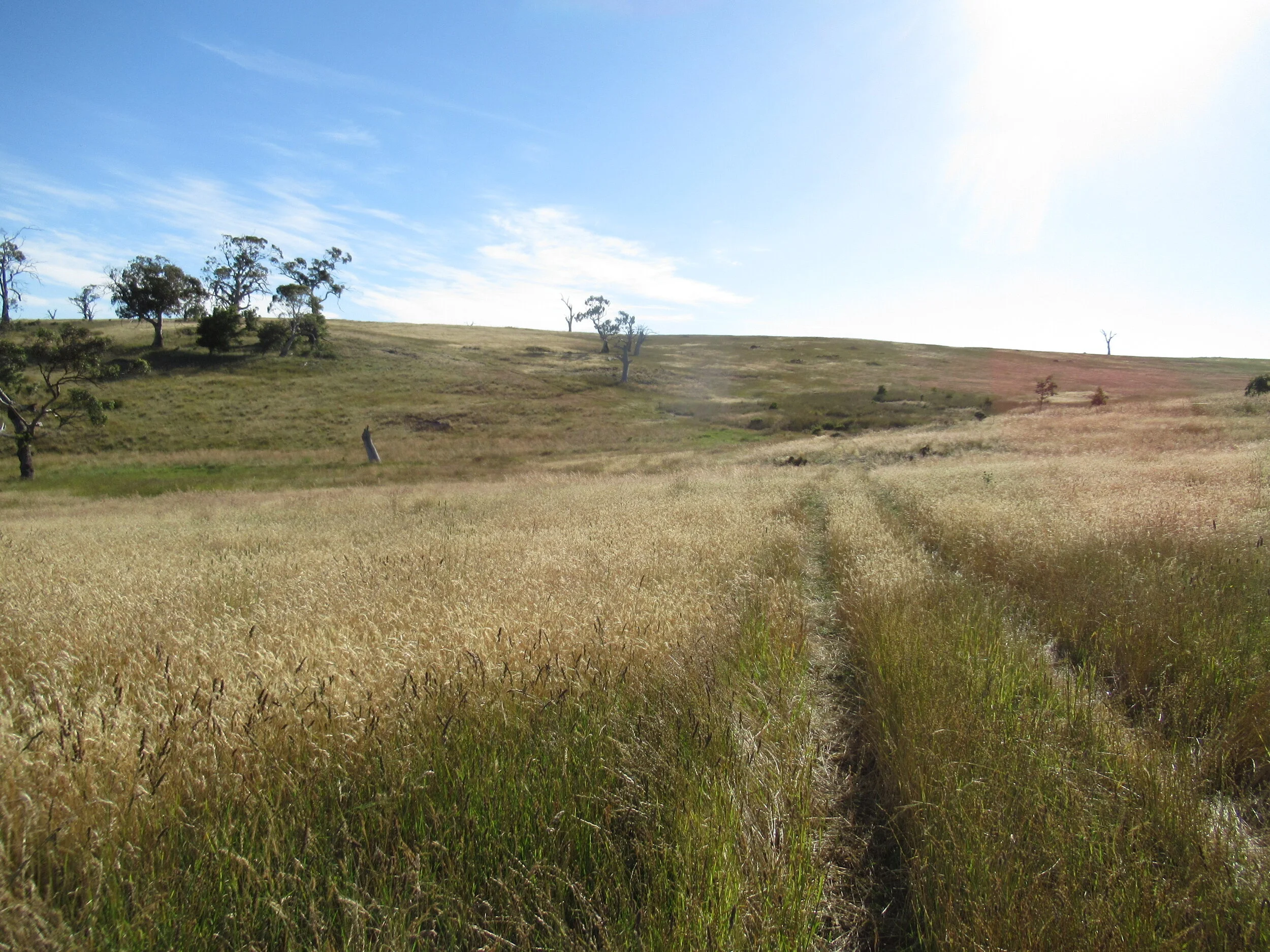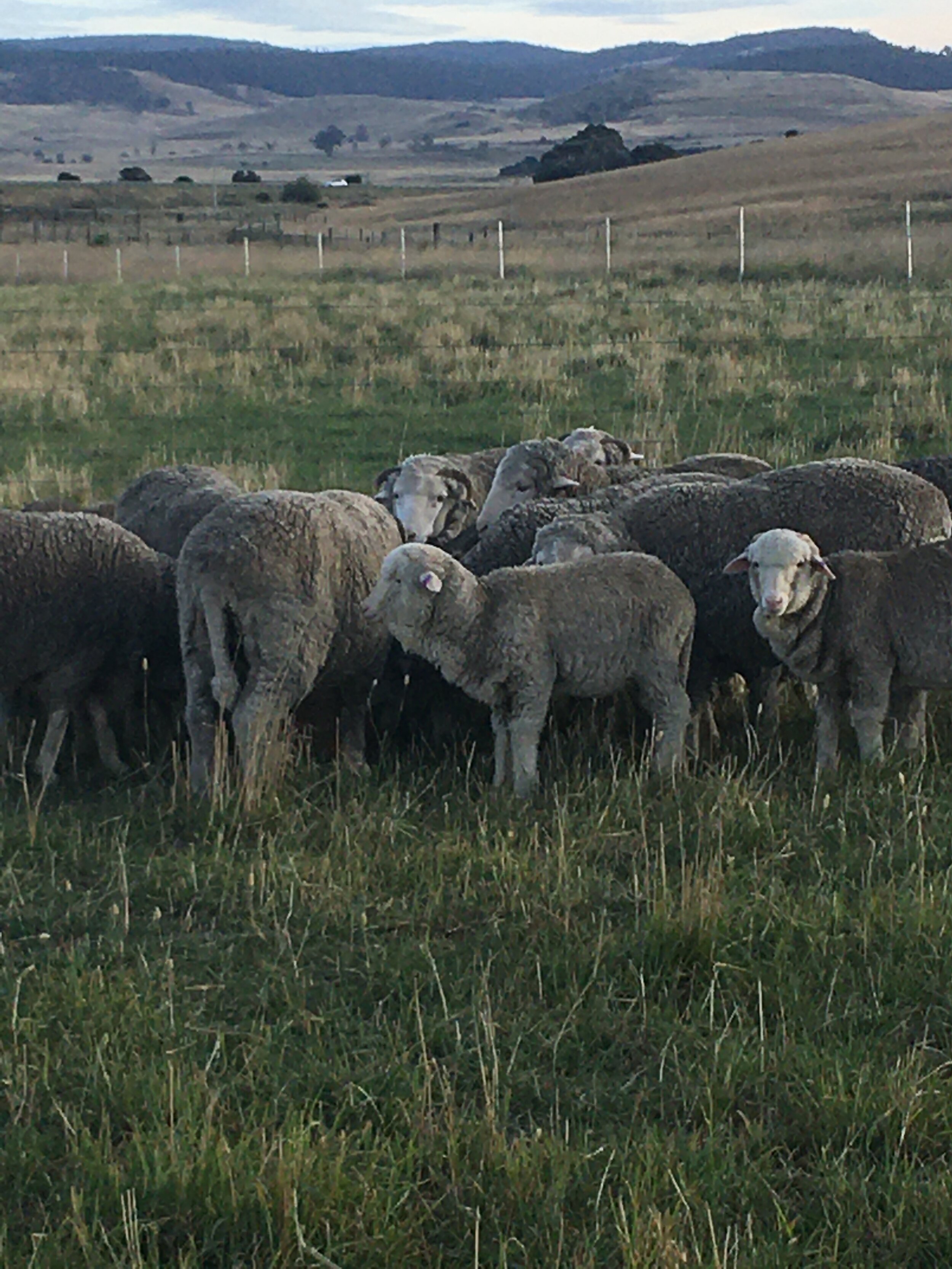Since I began “active shepherding” in 2014 as a way to help my flock find the biodiversity they need to stay healthy, I’ve gone through several cycles. The first was simply figuring out how SLOWLY they need to travel in order to eat on the move. The lesson for me and my dogs was to enter into what I call “sheep time”—actually a feeling of timelessness. Getting there took me the best part of a year.
The second cycle was much easier—learning how much simpler it is to go with sheep flow. Uphill and into the wind are the preference, so why not go there if all else is equal? Just because I left home with a particular circuit in mind, there was every reason to alter the plan to make the lift and move easier. Another year for the second lesson to really sink in.
The third cycle was letting go of needing to know exactly what the sheep were eating and why. My scientist side REALLY struggled with this, but finally bowed to the pressure of reality: there was no way I was going to ever know, and besides, I didn’t need to know—the sheep did. Another year for the third lesson.
There followed three years of more or less routine shepherding, with the added element of altering the large-scale layout of paddocks to make it easier for the flock to shepherd themselves. This involved identifying three “grazing areas”: the Basin, the Racecourse, and White Gum Wood.
Each grazing area covers about 300 acres, and comprises paddocks that align with the natural contours of the land as much as possible, to discourage sheep from heading to the tops of hills and ignoring the bottoms. Each area has ready access to sections of high native biodiversity. Although I left the fences in place, by this point the sheep were perfectly aware of all gates and moved readily within each grazing area. I thought I would rotate roughly seasonally between the three areas.
And here we come to the secret heart of all livestock management: whatever management regime we put in place, sooner or later the system responds by changing in ways that require us to rethink and re-adapt.
I had no sooner settled happily into my clever 4-month grazing rotation than I realised I couldn’t keep using it: I was allowing ⅔ of the property to rest in the growing season, and ⅓ kept getting hit, year after year. Oops.
Then came 2019-2020, the driest in a decade, made worse by the preceding two years of much less than average rainfall. Resting the grazing areas wasn’t much help, because there was damn little growing going on at all.
So the next cycle of learning was to cross my fingers and hope the sheep were in fact locally adapted, and didn’t need my help. I opened essentially all of the gates to the whole farm, and let them go where they willed. It worked surprisingly well once they quit hanging around waiting for instructions from me. Although the property didn’t look as lush as I would have liked—by a long shot—the sheep grew the best clip of wool I’ve ever had. So, even though I was worried, the sheep weren’t.
The main lesson I learned from this cycle was how much longer sheep choose to stay grazing in one general area before moving on—days, when I would have been moving them within hours. Hmmm. Yet another manifestation of “sheep time”?
Although I recorded where the sheep were on most days, I simply stopped active shepherding altogether in May of 2020, and only resumed during the past month.
What drove the current renaissance? The advent of 28 adopted lambs. For the first time ever, I have a flock of lambs without their birth mothers. I’d forgotten how long it took me to get the flock to accept me and the process of shepherding—a good couple of years. And of course once the mamas were adapted to me and the property, they taught their babies, letting me take the whole adaptation process for granted.
A couple of lambs cozying up to the older named sheep.
Not so with the adopted kids. They came to us at the age of about 4 months, having hung out together for perhaps 4 weeks after they were weaned, but before I got them. They are definitely a gang, and definitely NOT adapted to me. My strategy was to put them with my 25 named sheep and keep them in smaller paddocks until I could be confident they had bonded with the older sheep and were willing to accept me. It’s taking more time and effort than I imagined, and we still have a way to go!
Lambs feasting on melaleuca gibbosa (slender honey myrtle) a native plant I think they knew from their birthplace.
At the same time, I realised that there were good reasons to keep shepherding the full flock—mostly a matter of paying attention to their health and well-being—checking for flystrike (I found and treated two this morning), ensuring their water supply is okay, and moving them to different pastures from time to time.
This year has been different from any previous year of my 20 years in farming, with amazing growth following exceptionally good rainfall in winter and spring, and even through summer. As a result, the Basin and White Gum Wood grazing areas have been ungrazed since September of last year.
Long grass in the Basin grazing area in January 2020
In the Racecourse grazing area, I’ve been deploying the sheep strategically to mow down exceptionally long grass, rather than allowing them free access to all the paddocks. However, sheep do get tired of the same thing day after day, so moving them fairly regularly gives them the variety they need. Sometimes I think it’s as much a change of scene as of forage!
So, what with training the babies and keeping the flock happy, I spend most mornings shepherding, but not the way I used to. This is more like short-course shepherding, where I move the sheep a relatively short distance, leave them to graze and come back later to move them either back or on to the next paddock. It lets me get home for lunch, and leaves my afternoons for writing blog posts (as a way to avoid cleaning house)!





